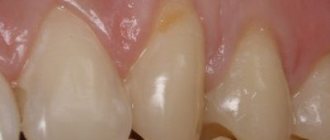General information
Iridocyclitis (from the Greek iridos - iris, kykios - eye) is a disease in which the iris and ciliary body or part of the anterior vascular tract of the eye is affected.
The disease is more common in young people, starting at age 20, and can affect both or one eye. With an isolated lesion of the iris, iritis , and if the inflammation affects only the ciliary body, then it is cyclitis . However, inflammation usually affects both structures.
Endogenous iridocyclitis is distinguished , resulting from the introduction of an infectious agent into the tissue of the iris and ciliary body - viruses , bacteria , fungi , chlamydia or toxins in the tissue. Exogenous iridocyclitis manifests itself as complications of various inflammatory diseases of the cornea, as well as as a result of penetrating damage to the eyeball.
The following types of iridocyclitis are distinguished:
- infectious;
- allergic (infectious and non-infectious);
- post-traumatic and post-operative ;
- for systemic diseases.
According to the course of the disease, iridocyclitis can be acute , subacute and chronic . According to the nature of inflammation, iridocyclitis is divided into serous , exudative , purulent , fibrinous-plastic and hemorrhagic . All of them have a different clinical picture, depending on the causes of the disease.
The main causes of iridocyclitis are various infectious diseases of the body - influenza , tuberculosis , syphilis , herpes , leptospirosis , gonorrhea , as well as eye injuries and eyeball surgery. Sometimes the cause of iridocyclitis can be foci of chronic infection in diseases of the sinuses, tonsils, and jaws. In such cases, prevention of iridocyclitis is necessary. The disease can also occur with systemic diseases of the body, such as rheumatism , sarcoidosis , diabetes mellitus . Such iridocyclites are called endogenous.
However, more often iridocyclitis can occur due to penetration of viruses, bacteria, fungi into the iris and sclera, as well as as a consequence of any inflammatory eye diseases (exogenous iridocyclitis). This is facilitated by the developed vascular network in the iris and ciliary body, which favors the development of harmful microorganisms in them. Provoking factors are also injuries, hypothermia, excessive physical activity, and stress.
Causes
There is no exact cause of iridocyclitis, but a number of predisposing factors can be identified:
- rheumatism;
- eye injuries;
- keratitis (inflammation of the iris);
- viral infections, gonorrhea;
- systemic diseases;
- gout;
- diabetes.
Increased blood supply to the iris contributes to the rapid penetration of pathogenic microorganisms and the development of an inflammatory reaction. The vascular network of the eye begins to be affected when microbial microflora enters. Inflammatory mediators - serotonin and histamine - take an active part in this process. As a result, eye cells begin to break down. Blood flow deteriorates and scarring of injured tissue occurs.
Symptoms of iridocyclitis
In medical practice, the following symptoms of iridocyclitis are distinguished:
- pain in the eye and in the temporal region;
- photophobia;
- lacrimation;
- redness of the eyeball;
- visual acuity decreases;
- the pupil narrows ( miosis ), it may become irregular in shape;
- change in the pattern and color of the iris, the pattern seems to be “smoothed out”;
- vitreous opacification;
- exudate may appear in the anterior chamber of the eye, which accumulates in the form of a crescent or strip with gray or yellow contents;
- in the presence of exudate, adhesions may form ( posterior synechiae );
- changes in intraocular pressure.
If such symptoms appear, you should immediately consult a doctor; timely diagnosis of iridocyclitis and initiation of treatment can cure it without complications.
Prognosis for iridocyclitis and preventive measures
If a patient with iridocyclitis seeks medical help in a timely manner, then in 20% complete recovery occurs. But still, the disease can often take on signs of a recurrent infectious-inflammatory process, which tends to worsen simultaneously with the underlying diseases - diabetes, rheumatism, gout.
It is also worth considering that frequent viral or infectious diseases can also provoke the development of iridocyclitis. Affects illness and decreased immunity. Therefore, among the preventive measures it is worth highlighting the following:
- increasing the body's defenses;
- good nutrition;
- timely treatment of all infectious diseases, especially acute iridocyclitis;
- seasonal flu vaccination;
- prevention of hypothermia.
Possible complications and consequences
Treatment of iridocyclitis gives a favorable prognosis for the patient. In 15-20% of cases, complete recovery is observed, in 50% it becomes chronic, which can lead to deterioration of vision. If the disease is not treated in a timely manner, this can lead to consequences: cataracts, secondary glaucoma, retinal detachment and vitreous distortion. Such complications lead to loss of vision, and in worst cases, removal of the eye.
Attention! At the first signs of iridocyclitis, you should contact a specialist to avoid consequences
Will vision be restored after illness?
Complications lead to deterioration of vision. Recreating it is not an easy task, since new surgical interventions can provoke an exacerbation of inflammation. Before offering a patient surgery, it is necessary to carefully examine him.
Once vision is lost due to glaucomatous optic atrophy, it cannot be restored.
Treatment of the disease
Therapy is carried out long and persistently, sometimes months are spent on it, because everything must be consistent.
Therapy for iridocyclitis should be carried out as quickly as possible and aimed at eliminating the main cause that provoked the appearance of anterior uveitis.
Traditional therapy is focused on preventing the appearance of posterior adhesions and eliminating the possible risk of complications. It includes emergency care and planned treatment. First aid for iridocyclitis consists of taking antihistamines, instilling eye drops that dilate the pupil (mydriatics), corticosteroids and NSAIDs.
Planned treatment is carried out in a hospital under the direct supervision of doctors. Therapy includes the use of powerful local and general antiseptics (Poludan, Miramistin, Albucid), antiviral (Floxan, Okoferon, Acyclovir), antibacterial drugs (Torbex, Oftavix), hormonal agents (Prednisolone), NSAIDs (Indomethacin) and corticosteroids in the presence of autoimmune or toxic-allergic iridocyclitis. Mydriatics (Atropine, Tropicamide, Mezaton, Ifirin) and agents to reduce capillary permeability (Dition) are used. The drugs are used in the form of drops, ointments, administered intravenously and intramuscularly, and parabulbar injections are performed (injections are made through the skin of the lower eyelid).
Detoxification is carried out (Hemodez, Reosorbilact and a solution of five percent glucose are administered intravenously), in the presence of severe inflammation, hemosorption, plasmapheresis, and instillation of mydriatics are performed, which prevent fusion of the lens and iris. Prescribe vitamin-mineral complexes, immunostimulants, immunosuppressants, enzymes to eliminate exudate and adhesions. Physiotherapy is also carried out for iridocyclitis, including electrophoresis, laser and magnetic therapy.
Anterior uveitis of syphilitic, rheumatic, tuberculous nature requires specific therapy under the direct supervision of highly specialized specialists.
Surgery for iridocyclitis is prescribed in cases of complications (formation of adhesions, secondary glaucoma).
Medical indications
What is cyclitis, iritis, keratouveritis? These are ophthalmological diseases associated with inflammation of the choroid of the organs of vision. The pathology in question is diagnosed at any age, but more often in people between 20 and 40 years old. According to the current, acute and chronic iridocyclitis are distinguished.
The duration of the acute form of the disease is 3-6 weeks, and the chronic form is several months. The causes of iridocyclitis are characterized by the following:
- endogenous;
- exogenous.
More often, the pathology develops after eye injury and keratitis. The disease can be triggered by a transmitted virus, bacterial or protozoal disease. Other causes of ocular iridocyclitis:
- infections;
- rheumatoid condition;
- high susceptibility of the iris and eyelashes to CEC.
Ophthalmologists include endocrine and immune disorders, stress, and hypothermia as provoking factors for the disease. With the disease in question, 1 eye is most often affected. Primary signs of iridocyclitis:
- general redness;
- eye pain, which intensifies when pressing on the apple;
- lacrimation;
- photophobia;
- low visual acuity.
Advantages of treating iridocyclitis in MGC
Correct diagnosis and timely treatment are the key to successful treatment of iridocyclitis. By contacting the Moscow Eye Clinic, you can quickly and absolutely painlessly undergo a high-quality examination using the best diagnostic equipment. Not a single complaint of yours will go unnoticed by the doctor! After making a detailed diagnosis, our specialist will select for you a treatment regimen that will be most effective in your particular case.
Our clinic employs the best domestic specialists with many years of experience in the successful treatment of various eye diseases. The clinic has its own hospital. For the convenience of patients who require regular medical care, there is a day hospital where you will receive intraocular injections, a hirudotherapy session, hardware and physiotherapeutic treatment.
Doctors at the Moscow Eye Clinic are ready to provide professional ophthalmological care seven days a week, from 9 a.m. to 9 p.m.
Therapy methods
Treatment of iridocyclitis is carried out to eliminate the cause of its occurrence. Conservative therapy is aimed at preventing the formation of posterior synechia and reducing the risk of complications.
In this case, timely emergency care should be provided and planned therapy should be carried out. At the first stage of illness, it is recommended to instill eye drops with agents that dilate the pupil. For this purpose, mydriatics, NSAIDs, corticosteroids, and antihistamines are used.
Planned therapy is carried out in a hospital. It includes local, general antiseptic, antibiotic, antiviral treatment. The patient is administered hormonal agents and anti-inflammatory non-steroids.
Drugs of the first group are presented in the form of eye drops and injections. If iridocyclitis of a toxic, autoimmune or allergic nature is detected, then corticosteroids are prescribed.
To eliminate severe inflammation, detoxification treatment is prescribed. The patient is given instillations of mydriatic solutions, which prevent the fusion of the lens with the iris. The patient is advised to take multivitamins and immunosuppressants.
Magnetic and laser therapy are often prescribed. To eliminate iridocyclitis of syphilitic and tuberculous etiology, specific therapy will be required, which will be prescribed by appropriate specialists.
Standard drug treatment regimen for iridocyclitis:
- antiseptic + antibiotic + antiviral agent (Poludan, Torbex, Floxal);
- non-steroids (Aspirin, Methindol, Indomethacin);
- antihistamines (Claritin, Loratadine);
- hormonal drugs (Dexamethasone, Novo-prednisolone);
- mydriatics (Irifrin, Atropine);
- agents that reduce capillary permeability (Ditsinon);
- immunomodulatory medications (Equoral, Cyclosporine);
- multivitamins;
- atropine sulfate (taken on the recommendation of an ophthalmologist); the maximum dose is 2 drops, and the number of uses is 6 times a day; You can buy atropine sulfate ointment, which will quickly dilate the pupil, preventing fusion of the iris with the lens.
Diagnostics
An ophthalmologist can diagnose the disease. Typically, the diagnosis is made based on the patient talking about his condition. The eyes are also palpated and the biomaterial of the anterior chamber of the eyeball is examined. A slit lamp examination is carried out, which can show accumulations of cells on the surface of the cornea that form due to inflammatory processes. The doctor may detect a yellowish-gray strip of pus at the bottom of the anterior chamber of one of the eyes, which may have a reddish tint if the blood vessels are damaged. As a rule, iridocyclitis is a one-sided disease; less often, both eyes are affected at once .
Diagnostic features
To clarify the diagnosis, the doctor may also prescribe blood tests - general and biochemistry. They will help determine the degree of inflammation. It may also require an X-ray of the lungs and examination by other doctors, including a dentist, otolaryngologist, allergist or infectious disease specialist. A coagulogram, allergy tests and other research methods will help determine the etiology of the disease.











